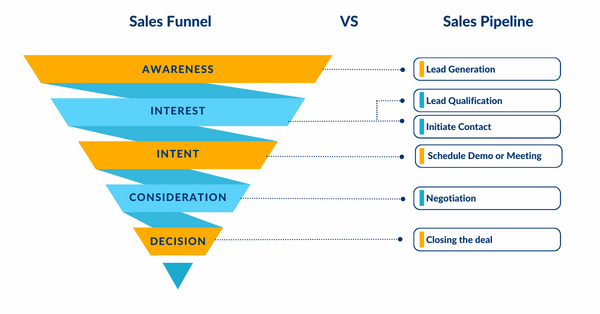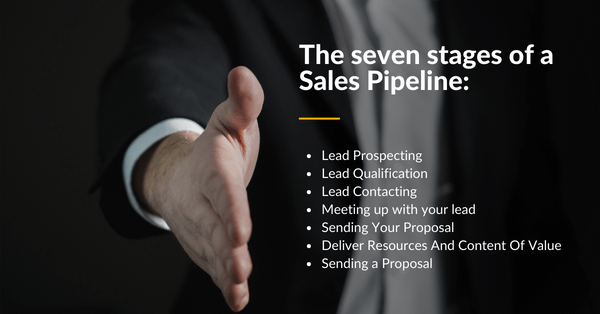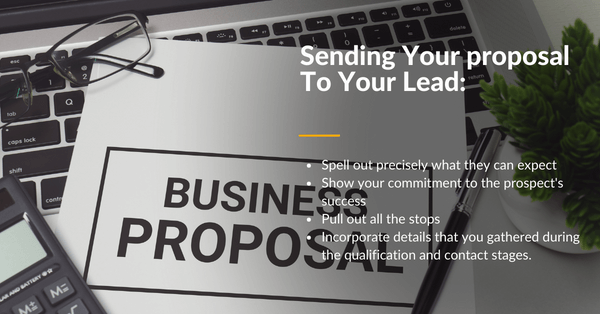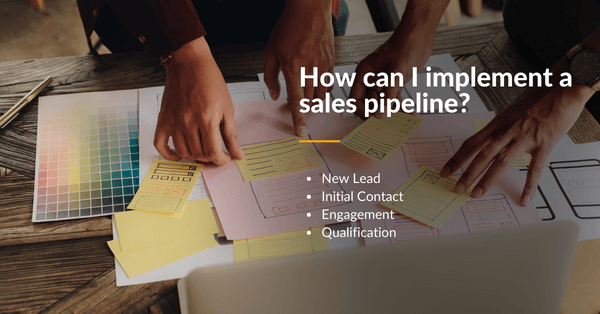Sales pipeline is a supply chain which has stages. It helps you in forecasting, forecasting development and forecasting sales. In this blog, you will learn what a sales pipeline is, the stages in the sales pipeline, why a sales pipeline is important to any business and how a Sales pipeline helps your business reach its sales targets.
What is a Sales Pipeline
A sales pipeline is a guide that shows the steps your customers take on their journey from finding your business to becoming a loyal customer. The levels of your sales pipeline represent the different steps in your company’s sales process. In a CRM (customer relationship management) system, your sales pipeline is often shown as a horizontal bar that has every step listed.
What is the difference between a sales pipeline and a sales funnel?
A sales funnel is a tool that helps salespeople visualize the journey that prospects take from being a lead to becoming a customer.
The sales funnel also helps salespeople calculate their conversion rate, or the number of prospects that they need to find in order to meet their sales goals.
It’s important to note that a sales funnel only tracks the volume of prospects, while a sales pipeline also tracks the value of each opportunity.

What is the problem with the Sales Pipeline?:
Imagine your sales process as a winding river. You’ve got a bunch of different streams feeding into it (leads), and you want to make sure that you don’t miss any opportunities (to score some business deals!) as they travel down the river. CRM is basically a life vest for salespeople. It helps them keep track of all their leads and sales opportunities, so they don’t miss a beat – even if things get hectic.
So how do you overcome this:
A sales pipeline can be an excellent help for sales teams who want to collect and analyze data. It can offer visibility into which sales activities are giving the greatest return and help identify any potential pain points in the sales process. Additionally, a sales pipeline can also help optimize the sales process by providing data that can be used to make changes accordingly.
How does it work :
Sales pipeline stages help sales teams to achieve their goals by providing a level of accountability and transparency. Basic sales pipeline features allow sales managers to track their team’s performance and progress, and identify areas of improvement. With a pipeline in place, salespeople are able to see exactly where their money, deals, and other sales efforts are at all times so they can focus on the next step in their work process.
What are the seven stages of a Sales Pipeline?

1. Lead Prospecting:
The prospecting stage in sales is all about finding and contacting potential sales leads. This can be done through activities like cold calling, emailing, or messaging on LinkedIn. If your business uses inbound marketing to find leads, you might call this stage lead generation instead.
Sales teams must be able to quickly find the ideal prospects and update their information as new data becomes available. By filling in additional structure to the sales pipeline can help sales teams by creating rules and guidelines for data collection. For example, a rule can be put in place that requires all form fields to be filled out before a new prospect is added to the pipeline. This helps to ensure that all information is collected and that nothing is missed.
Conditionals can be a godsend for sales reps trying to move a prospect through the sales process. By automatically moving the prospect into the next phase if certain criteria are met, reps can focus on capturing and organizing relevant information in a single portal. This not only saves time, but it helps keep things organized so that nothing falls through the cracks.
Sorting through a big load of leads can be daunting, but labels and filters can assist you in focusing on the most promising prospects.
By taking the time to set up effective labels and filters, you can make sure that your team responsible for sales is only dealing with the best leads, which will help them close more deals and improve your bottom line.
2. Lead Qualification:
The next step to the Sale Pipeline Stage is Lead Qualification.
Many businesses use a discovery call to identify qualified leads, especially in business-to-business (B2B) sales.
When a prospect answers the phone or responds to your email, you begin the lead qualifying process. This process involves asking your prospect questions to determine whether they should continue through the sales process.
Some key questions to answer include:
- Does the prospect need our product?
- Can the prospect afford our product?
- Does my contact have the authority to make a purchase?

3. Lead Contacting:
Now that you’ve narrowed your prospects down to the most qualified opportunities, you’re left with people who are actually interested in your product. It’s time to get in there and sell it. This will require contact, whether that’s a phone call, a face to face meeting, a product demo, or a virtual meeting.
Before you get everyone together for a meeting, make sure you have a clear understanding of the goal or purpose. This way, you can ensure that everyone who is involved knows what must be accomplished. This will help make the meeting more productive and focused.
If you want your meeting to be successful, you should prepare a clear agenda ahead of time. This will help you keep the meeting on track and prevent it from being hijacked by a Chatty Patty. Additionally, having a clear agenda will help you accomplish your goals for the meeting.
4. Meeting up with your lead.
This is an important step in the sales pipeline.
At this point, you will have collected a great deal of information about your potential customer.
You will have realized that what you have to offer could be the right fit for them.
Now it is time to take what you know about your prospect and create a presentation that will help them understand how your product can address their needs.
When you understand the prospect well, you will be able to address their pain points and deliver a presentation that is relevant to them.
5. Sending Your Proposal

Now that you’ve shown your prospect what your product or service can do, it’s time to put a price tag on that value.
A formal proposal should spell out exactly how much the customer stands to gain from investing in your product.
This way, their legal and finance teams can review the proposal and see that you’re the best option available.
Take this opportunity to show your commitment to the prospect’s success and why you’re better than the competition.
Your proposal is your chance to pull out all the stops and make your prospect feel like the most special person in the world.
You can do this by incorporating details that you gathered during the qualification and contact stages.
This will show your prospect that you took the time to get to know them and their needs, and that you’re ready to provide them with a solution that meets those needs.
6. Deliver Resources And Content Of Value
If your service or product is complex, you can provide additional information and explain the benefits to your prospects in the coming follow-up email. If you’re unsure whether what you had to offer was clear, try presenting it in a different way for their curiosity to peak.
Follow-ups offer an excellent opportunity to recapture your prospects’ attention and give them more information about your offer. You also can include links to your blogs or direct them to your website’s Q&A.
7. Sending a Proposal
If your service or product is complex, you can provide additional information and explain the benefits to your prospects in the coming follow-up email. If you’re unsure whether what you had to offer was clear, try presenting it in a different way for their curiosity to be rekindled.
Follow-ups offer an excellent opportunity to recapture your prospects’ attention and give them more information about your offer. You also can include links to your blogs or direct them to your website’s Q&A.
How can I implement a sales pipeline?

To build your sales pipeline you have to build four basic stages:
1. New Lead:
When a lead is tagged as a new opportunity, the software assigns a sales rep to contact him. An email is automatically sent to the new opportunity’s inbox with instructions on how they can speak with the sales rep who has been assigned to them.
2. Initial Contact:
If the lead does not move to the next stage, then there is a sales rep reaching him. If the sales rep reaches him and leaves a voicemail, then he will receive an automated email as a follow-up. This can be triggered by any other type of event that may happen to a lead in Salesforce, such as getting marked as needing attention or requiring follow-up later.
3. Engagement:
The sales rep is talking with a lead to learn about his needs, how your product or services can benefit him, and uncover the challenges that he is having with the current solution. He’s also listening for ways to enhance your value proposition, so he can present you as the clear choice when it comes time to make a decision.
4. Qualification:
The qualification stage marks the beginning of the sales funnel. The sales rep must develop a strategy for qualifying leads, which is then automated with rules-based triggers. Setting up these easily-executed processes gives your organization the ability to maximize efficiency and profitability in lead generation.
Conclusion
If you’re like most businesses, you have a lot of leads in your sales funnel. Some of those leads are just beginning their journey, some have moved through the early stages, and others are further along. At each stage of the sales pipeline, the prospects are in different levels of interest and readiness to buy. It’s important to understand each stage in order to make sure you’re not spending all of your time on prospects who aren’t ready to buy.
Thank you for reading, and I hope you found this post useful!
Before you go, I want to offer you something. It is a coaching program that helps you grow your business to get more leads, make more sales and change the world.
Our weekly coaching calls will help you set goals and track your progress towards them. Our weekly accountability checks will remind you exactly how far along you are in reaching those goals. And our daily support from myself and my team will keep us connected throughout the week so we can answer any questions or concerns that come up as they arise.
It’s time for you to take charge of your own success—we’re here to make sure it happens!
You can read more about it here.
We hope you enjoyed our recent outreach blog and as always should you have any questions feel free to contact me anytime. I’d be happy to discuss this topic further with you.






0 Comments